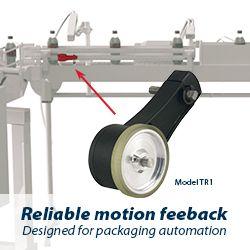Underwater Robotics Competition Challenges Students to Ensure the Health and Safety of Port Cities
Long Beach City College to host MATE International ROV Competition June 23-25.
Instead of methodically swimming laps up and down eight lanes in the Viking Aquatics practice outdoor heated pool, hundreds of students representing more than 60 teams from around the world will be meticulously testing their underwater robots during the Marine Advanced Technology Education (MATE) Centers 16th annual international student underwater robotics competition from June 23 to June 25 at Long Beach City College in Long Beach, Calif.
Each year, the MATE competition challenges students from K-12, community colleges and universities to design and build underwater robots to complete missions that are based on scenarios from the workplace. The students are also tasked with creating mock companies, thinking like entrepreneurs and working together to "manufacture, market and sell" their products, i.e. their ROVs. Not only do students develop technical skills as they engineer the robots, they also gain leadership, project management and communication skills as they prepare technical reports and poster displays and deliver presentations that are evaluated by judges from the professional marine technology world.
This years competition focuses on the role ROVs play in securing the health and safety of todays seaports. It also encourages students to think about how this technology can help lay the groundwork for "port cities of the future." Like port managers, the students will operate their ROVs to handle tasks that include finding cargo containers that fell overboard, constructing an underwater tunnel and cleaning up contaminated sediment. Instead of piloting their ROVs in sometimes confined and precarious actual port conditions, students will safely work in the Long Beach City College Viking Aquatics pool.
To qualify for this international event, many of the teams participated in 30 regional competitions that took place across the United States and around the world, including Canada, the United Kingdom, Russia, Southeast Asia, Hong Kong and the Middle East.
Organized by MATE and supported by the Marine Technology Societys ROV Committee, the ROV competition also receives support from the National Science Foundation and other technology and education related organizations.
For more information, visit http://www.marinetech.org and follow #MATE2017 on Twitter @matecenter.
##
About Long Beach City College
Long Beach City College consists of two campuses with an enrollment of over 25,000 students each semester. The education programs primary purpose is to prepare students for transfer to baccalaureate-granting institutions, entry into work or career development, and to support businesses in economic development. Long Beach City College serves the cities of Long Beach, Lakewood, Signal Hill and Avalon. Long Beach City College promotes equitable student learning and achievement, academic excellence, and workforce development by delivering high quality educational programs and support services to our diverse communities. Visit http://www.LBCC.edu for more information on Long Beach City College.
Featured Product

Model TR1 Tru-Trac
The Model TR1 Tru-Trac® linear measurement solution is a versatile option for tracking velocity, position, or distance over a wide variety of surfaces. An integrated encoder, measuring wheel, and spring-loaded torsion arm in one, compact unit, the Model TR1 is easy to install. The spring-loaded torsion arm offers adjustable torsion load, allowing the Model TR1 to be mounted in almost any orientation - even upside-down. The threaded shaft on the pivot axis is field reversible, providing mounting access from either side. With operating speeds up to 3000 feet per minute, a wide variety of configuration options - including multiple wheel material options - and a housing made from a durable, conductive composite material that minimizes static buildup, the Model TR1 Tru-Trac® is the ideal solution for countless applications.
